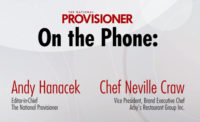Consumers of all types are increasingly demanding convenient, heat-and-eat meat and non-meat protein-based meals and snacks. For many, especially those who are more health-conscious, a “clean” label showing no preservatives is a top consideration. Others may simply want the easiest, lowest cost option. But with both segments, the pre-cooked product that looks and tastes best is typically the one that wins in the market.
This is where a new type of sous-vide cooking comes in. An innovative, horizontal counter-flow alternative to traditional, water tank or water-bath sous-vide cooking is dramatically improving the quality of pre-cooked foods. It is also eliminating the quality inconsistency that has been a challenge for food processors cooking sous vide. Marrying this novel approach with highly controlled in-package pasteurization further fuels ROI and protects brands by minimizing potentially devastating food safety issues.
Sous vide and pasteurization: how the concept took hold
Sous-vide (French for “under vacuum”) cooking began in scientific laboratories when researchers used precisely heated water baths to incubate live cell cultures. Later, with the advent of plastic and vacuum-sealed packaging, sous vide turned out to be a convenient way to make packaged consumer food products safer: placing sealed foods in a heated water bath made pasteurization easier for food companies.
What food engineers and the world’s top chefs have realized is that this in-package pasteurization process can also pre-cook food perfectly. Vegetables remain crisp and proteins, in particular, are left moist, aromatic, and tender when sealed and cooked in their own juices at a temperature lower than conventional cooking.
The timing couldn’t be better, considering the rising demand for higher quality convenience foods. Until recently, food producers had to rely on traditional water immersion/circulation equipment to achieve the sous-vide effect — but this has limited the potential accuracy and quality of the method.
Multi-layer, horizontal cooking boosts taste, flavor
Today, sous-vide style cooking technology can use a horizontal counter-flow method and multiple heating zones to cook and pasteurize vacuum-sealed food. After packaging, the food is automatically loaded flat onto conveyor trays that move the product horizontally through a continuous water shower with several distinct heating zones. The flow volume and water temperature in these zones are automatically controlled. Each product is cooked gradually and individually for highly precise, consistent cooking quality and accuracy.
In contrast, traditional sous-vide style equipment plunges large batches of products vertically into a hot water bath, with each package experiencing different levels of heat exposure. The method can shock and damage the product and increase the likelihood of undercooking or overcooking.
The horizontal, counter-flow method takes the sous-vide concept and improves on it:
- Product lays flat and moves horizontally, not immersed
- Organized product formation, not random
- Ambient pressure environment, not high pressure
- Heat exchange for individual products, not groups
- Consistent core temperature, never fluctuating
Counterflow chilling and drying improves processing
The horizontal, continuous sous-vide method is enhanced by water-filled trays providing cooking energy from below the product. The trays move counter flow (cold to hot), whereas the product travels from hot to cold. In this way, the coldest product comes in contact with the coldest water, which allows for gentle and effective chilling. After the heating process, the product is rapidly chilled by an intense water shower of >1°C and supported by this controlled pool of water in the trays and brought to <5°C core temperature. After the heating and chilling process, the product is automatically moved onto a conveyor belt to an air blast station and air dried for boxing and shipping.
Automated quality control ensures reproducibility
Delivering consistent high quality and safety is key to creating a novel, pre-cooked convenience food that attracts loyal, repeat consumers. Achieving high quality control with conventional sous-vide equipment can require more labor and cumbersome processes to manage variability in heat exposure. The innovative horizontal, counter-flow technology solves the problem by integrating features that ensure cooking accuracy and quality:
- Precision water temperature control to +/- 1°C
- PLC system that controls and monitors operations
- Automatic process verification and parameter traceability
- Menu driven, but designed to make variations easy
The intelligent quality control features make a fully automated, multi-shift sous-vide cooking operation possible. The high degree of control also reduces errors and waste while increasing uptime and yield.
Extending shelf life – and supporting “clean” labels
In-package pasteurization and sous-vide cooking offer a significantly higher standard of food safety. Few to no additives are required and shelf life is extended, often dramatically. In one case a producer increased time from 40 to 65 days, while another reached up to 160 days. Complaints and returns also decrease. The horizontal, counter-flow pasteurization method goes even further by detecting when food might be reaching a state of over or undercooking. Currently, no other sous-vide system offers this capability.
There’s no question sous-vide cooking is gaining in popularity, thanks to it's gentle and exceptionally safe method of cooking. Producers who want the full benefits of sous-vide style and in-package pasteurization should step up to the horizontal counterflow method with integrated quality control. Only this innovative technology delivers a range of benefits that drive up ROI: exception, reproducible quality, uncompromising safety, higher yield and lower labor and energy costs.
For more information visit www.provisur.com.






